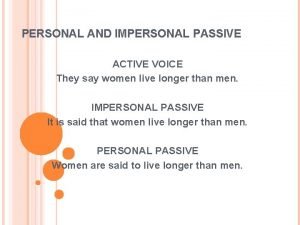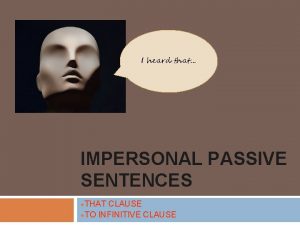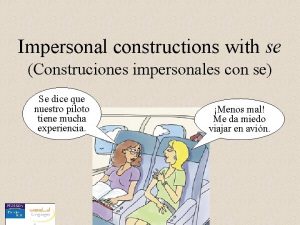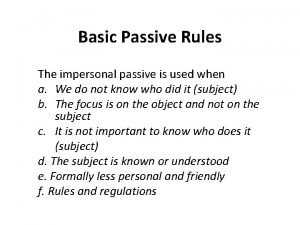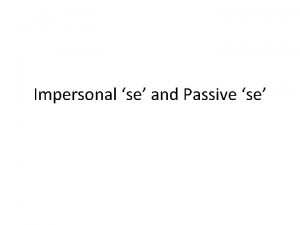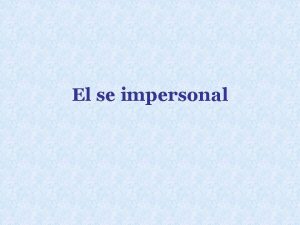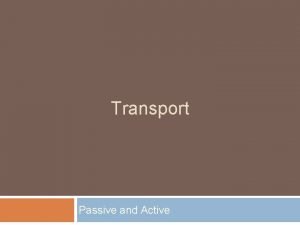The Impersonal and Passive se El se impersonal








- Slides: 8

The Impersonal and Passive se (El se impersonal y pasivo) Se dice que nuestro piloto tiene mucha experiencia. ¡Menos mal! Me da miedo viajar en avión.

The impersonal se You will remember using the reflexive pronoun se to talk about what people do to or for themselves. Marta se lava el pelo los lunes. Marta washes her hair on Mondays. Spanish often uses this se in an impersonal sense, that is, without mentioning a particular person. Aquí se lava la ropa los martes. Some English equivalents would be: Here you wash clothes on Tuesdays. Here one washes clothes on Tuesdays. Here they wash clothes on Tuesdays.

The impersonal se Following are other examples of this type of usage: Se dice que hay oro al final del arco iris. They say that there is gold at the end of the rainbow. People say that there is gold at the end of the rainbow. It is said that there is gold at the end of the rainbow. ¿Aquí se permite fumar? Is smoking permitted here? Do they permit smoking here? Can you smoke here?

The impersonal se The third-person plural of the verb may be used without se to express these impersonal subjects. Creen que Dora es muy aplicada. People think that Dora is very studious. Dicen que no hay mal que por bien no venga. They say that every cloud has a silver lining.

The passive se The pronoun se may also be used with the third-person singular or plural form of the verb as a substitute for the passive voice in Spanish. The agent, or person who does the action, is not mentioned in this type of construction since the speaker is making a general reference. Use se plus the third-person singular when the noun acted upon is singular. Se encontró el balón perdido esta mañana. The lost soccer ball was found this morning.

The passive se The pronoun se may also be used with the third-person singular or plural form of the verb as a substitute for the passive voice in Spanish. The agent, or person who does the action, is not mentioned in this type of construction since the speaker is making a general reference. Use se plus the third-person plural when the noun acted upon is plural. No se venden boletos los domingos. Tickets are not sold on Sundays.

The passive se The pronoun se may also be used with the third-person singular or plural form of the verb as a substitute for the passive voice in Spanish. The agent, or person who does the action, is not mentioned in this type of construction since the speaker is making a general reference. Use se plus the third-person singular when followed by an infinitive. No se permite caminar por el césped. It is not permitted to walk on the lawn.

Práctica • 1. Se _____ vende (vender) carne en la carnicería. puede • 2. Se _____ (poder (ue)) encontrar todo en el mercado. encuentran (encontrar (ue)) muebles • 3. Se _____ en la mueblería. permite (permitir) comer en la • 4. No se _____ clase.
